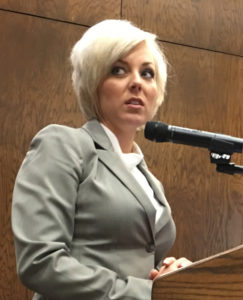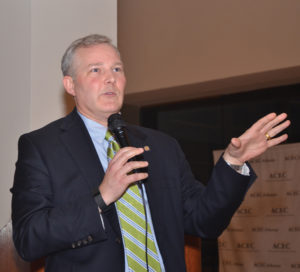
© 2016 by Steve Brawner Communications, Inc.
What’s the purpose of college? In the past, answers to that question often have been relatively abstract: to get an education; to expand your horizons; to be exposed to new ideas. Or the answers would be completely wrong: because it’s the next thing to do after high school; to party; to play football.
Increasingly, Arkansas policymakers have a new, more concrete answer: to earn a degree or certificate that leads to a job.
Last Friday, the Arkansas Higher Education Coordinating Board approved a funding framework that would change the way colleges and universities are funded – emphasizing completion versus enrollment.
Traditionally, the state has funded institutions based on head count, meaning the more students enrolled, the more tax dollars rolling in. That’s an imperfect incentive because it places too much of an emphasis on getting students in school versus getting them through school. In 2011, the funding formula was tweaked. Now, 10 percent of a school’s state funding is based on various performance-based measures that haven’t really changed anything.
Now what’s being proposed is a totally different, outcomes-based funding formula. The framework is still light on the details, so this explanation will be light. Funding would be based less on enrollment and more on the number of students earning degrees and certificates. It would provide incentives for schools to help students move to a degree faster – the opposite of the current model, where institutions make more money if students switch majors three times and stay in school six years before quitting with nothing. How well students do once they leave college would figure into the mix.
Are there potential unintended consequences? Sure. The state does not want to encourage schools to accept only the best and brightest, so the model will provide extra money for helping underserved and at-risk students complete a degree. The other big concern is that schools will water down their academic requirements so students more easily complete their courses. Dr. Brett Powell, former ADHE director, said the state will have to trust that faculty members won’t let that happen.
How colleges are funded is important because obtaining an education after high school is both expensive (for taxpayers and students) and necessary. A study by the Georgetown University Center on Education and the Workforce found that of the 11.6 million jobs created since the recession, 11.5 million went to those with at least some education after high school.
Obviously, it’s better to have not just some college but a degree or certificate and a set of skills, and here’s where Arkansas has some challenges and opportunities. The state ranks 48th in its percentage of adults with a college degree, 29.8 percent. But Arkansas ranks fourth highest in the percentage of residents with a career and technical education certificate. And these days, those certificates can be really valuable – as well as relatively cheap and fast to obtain.
The Arkansas Department of Higher Education and higher education officials have crafted a plan, Closing the Gap 2020, which seeks to increase the percentage of Arkansans with a degree or certificate from the current 43 percent to 60 percent by 2025. To meet expected workforce needs, the state needs to increase its percentage of residents with a career and technical education certificate from 9 to 22 percent by 2020; its percentage with an associate’s degree from 7.2 to 12 percent; and its percentage with a bachelor’s degree, but no higher, from 15.1 percent to 18 percent.
The new outcomes-based funding formula has a long way to go before becoming law. The Legislature must approve the bare-bones framework next year. Then Higher Ed must add some meat to those bones under the leadership of its new director, Dr. Maria Markham. Then the Legislature has to approve the final plan in 2018.
Making the task easier is that some of the state’s higher education leaders are on board. The chancellors of the University of Arkansas System and the University of Arkansas at Fayetteville have expressed support. So have Arkansas State University President Chuck Welch and Dr. Robin Bowen, president of Arkansas Tech University.
For change to occur, that support will have to hold as the details become known. Somebody’s going to lose something, including institutions that don’t make the transition well. And who will be the winners? Students who complete their programs and are ready to make a living as productive citizens.
If that’s not the main purpose of college, it should be.
Related: Is college worth it?

